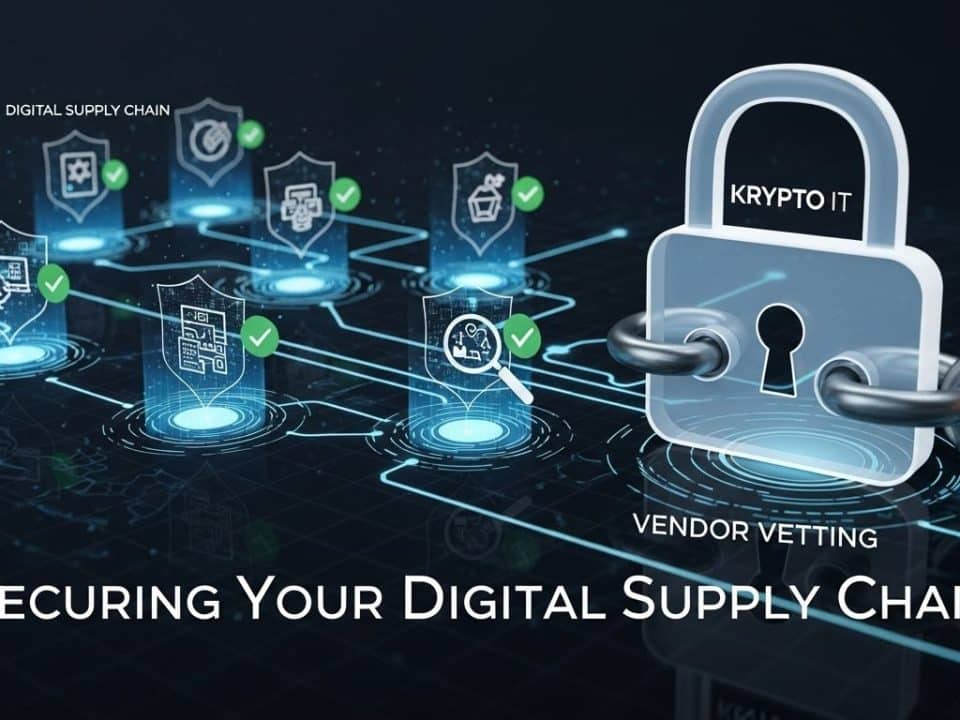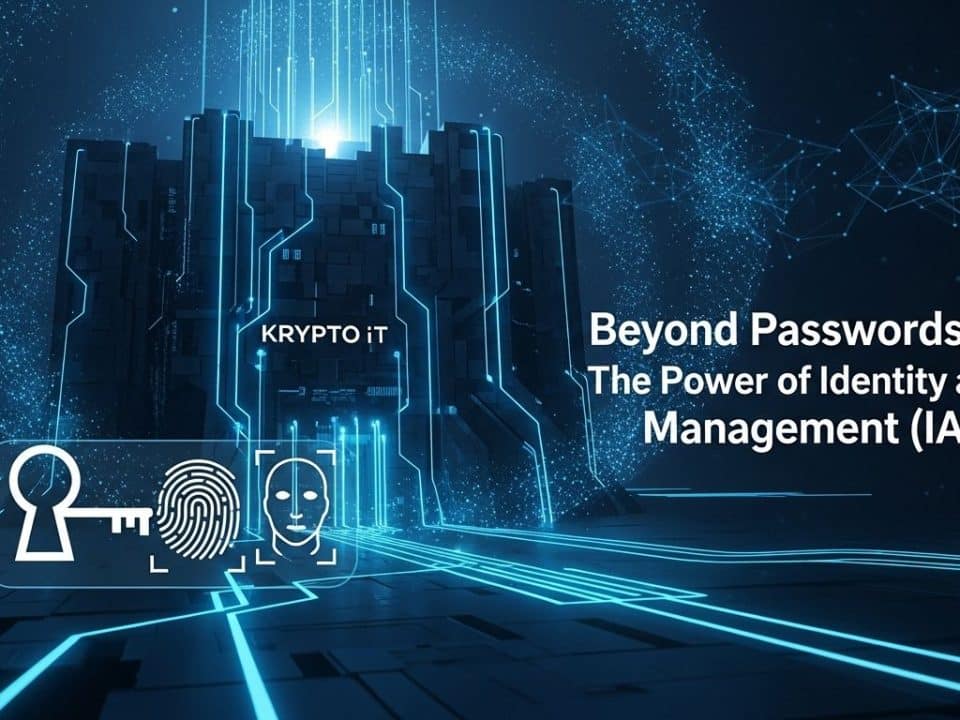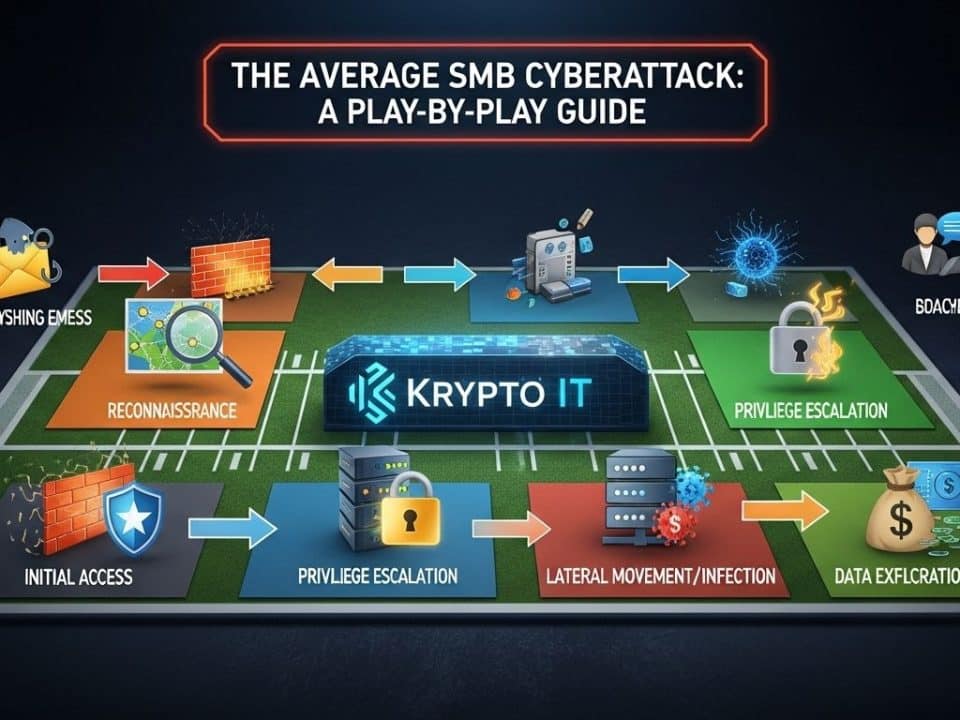
Sneaky New Phishing Kit Bypasses 2FA on Microsoft 365: A Wake-Up Call for Enhanced Security
January 20, 2025
The Shifting Sands of Cybersecurity: Why the Evolving Threat Landscape is Today’s Greatest Challenge
January 23, 2025The automotive industry is undergoing a rapid transformation, with vehicles becoming increasingly connected and reliant on software. While these advancements offer exciting possibilities for enhanced safety, convenience, and entertainment, they also introduce a new frontier of cybersecurity threats. Automotive cybersecurity is no longer a niche concern – it’s a critical issue with far-reaching implications for manufacturers, drivers, and the entire transportation ecosystem.
As your trusted cybersecurity partner, Krypto IT is committed to shedding light on emerging threats. This blog post will delve into the growing risks to automotive cybersecurity, explore the vulnerabilities of connected cars, and outline best practices for securing the vehicles of the future.
The Rise of the Connected Car
Modern vehicles are essentially computers on wheels, packed with sophisticated software, sensors, and communication systems. They connect to the internet, mobile networks, and other devices, enabling features like:
- Advanced Driver-Assistance Systems (ADAS): Features like lane keeping assist, adaptive cruise control, and automatic emergency braking.
- Infotainment Systems: Navigation, entertainment, and communication features.
- Remote Vehicle Access: Locking/unlocking doors, starting the engine, and monitoring vehicle status through a smartphone app.
- Over-the-Air (OTA) Updates: Software updates delivered wirelessly to the vehicle.
- Vehicle-to-Everything (V2X) Communication: Enabling vehicles to communicate with each other, infrastructure, and other road users.
The Emerging Threat Landscape
The increasing connectivity and complexity of vehicles create a broader attack surface for cybercriminals. Potential threats include:
- Remote Vehicle Hacking: Attackers could exploit vulnerabilities in the vehicle’s software or communication systems to gain unauthorized access and control.
- Malware Infections: Connected cars are susceptible to malware that could compromise vehicle systems, steal data, or even cause malfunctions.
- Denial-of-Service (DoS) Attacks: Attackers could disrupt critical vehicle functions, such as ADAS or communication systems, by flooding them with traffic.
- Data Breaches: Sensitive data collected by the vehicle, such as location data, driving habits, and personal information, could be stolen in a data breach.
- Ransomware Attacks: Attackers could encrypt critical vehicle systems and demand a ransom to restore functionality. Imagine not being able to start your car or the brakes being disabled until a ransom is paid.
- Supply Chain Attacks: Vulnerabilities in third-party components or software used in vehicles could be exploited to compromise the vehicle’s security.
- Eavesdropping and Man-in-the-Middle Attacks: Attackers could intercept communications between the vehicle and other systems, potentially stealing data or injecting malicious commands.
Potential Consequences of Automotive Cyberattacks
The consequences of successful cyberattacks on vehicles can range from inconvenient to life-threatening:
- Safety Risks: Attackers could disable safety features, cause the vehicle to malfunction, or even take control of the vehicle remotely.
- Privacy Violations: Sensitive data about the driver and passengers could be stolen and misused.
- Financial Losses: Theft of the vehicle, ransomware payments, or damage to the vehicle could result in financial losses.
- Reputational Damage: Automakers could suffer reputational damage if their vehicles are found to be vulnerable to cyberattacks.
- Legal and Regulatory Issues: Manufacturers could face lawsuits or regulatory penalties if they fail to adequately secure their vehicles.
Best Practices for Enhancing Automotive Cybersecurity
1. Secure by Design:
- Threat Modeling: Automakers should conduct thorough threat modeling during the design phase to identify potential vulnerabilities and develop appropriate security measures.
- Secure Coding Practices: Developers should follow secure coding guidelines to minimize vulnerabilities in vehicle software.
- Code Reviews and Testing: Rigorous code reviews and security testing should be performed throughout the development lifecycle.
- Cryptography: Strong encryption should be used to protect sensitive data both in transit and at rest.
2. Layered Security (Defense in Depth):
- Network Segmentation: Isolate critical vehicle systems from less critical ones to limit the impact of a breach.
- Intrusion Detection and Prevention Systems (IDPS): Implement IDPS to monitor for and block malicious activity within the vehicle’s network.
- Firewalls: Use firewalls to control communication between different vehicle systems and between the vehicle and external networks.
- Secure Boot and Trusted Execution: Ensure that only authorized software can run on the vehicle’s systems.
3. Over-the-Air (OTA) Update Security:
- Secure Update Mechanisms: Implement secure mechanisms for delivering OTA updates, including authentication and integrity verification.
- Code Signing: Digitally sign all software updates to ensure their authenticity and prevent tampering.
4. Supply Chain Security:
- Vendor Risk Management: Automakers should carefully vet the security practices of their suppliers and partners.
- Component Security: Ensure that all components used in vehicles meet stringent security standards.
5. Incident Response Planning:
- Develop an Incident Response Plan: Create a plan for responding to security incidents, including procedures for detection, containment, eradication, recovery, and post-incident analysis.
- Regularly Test the Plan: Conduct drills and tabletop exercises to ensure the plan’s effectiveness.
6. Collaboration and Information Sharing:
- Industry Collaboration: Automakers, suppliers, and security researchers should collaborate to share information about threats and vulnerabilities.
- Information Sharing and Analysis Centers (ISACs): Participate in industry-specific ISACs to share threat intelligence and best practices.
7. Continuous Monitoring and Improvement:
- Security Monitoring: Implement continuous monitoring of vehicle systems and networks to detect suspicious activity.
- Vulnerability Management: Establish a process for regularly identifying, assessing, and remediating vulnerabilities.
- Security Audits: Conduct periodic security audits to assess the effectiveness of security controls.
Policies and Procedures
- Automotive Cybersecurity Policy: Develop a comprehensive policy that outlines the organization’s approach to securing connected vehicles throughout their lifecycle.
- Secure Development Lifecycle Policy: Mandate security considerations at each stage of development.
- Vulnerability Disclosure Policy: Establish a program for researchers to responsibly disclose vulnerabilities they discover.
- Incident Response Procedures: Define clear procedures for handling security incidents involving vehicles.
Krypto IT: Your Partner in Automotive Cybersecurity
The emerging threat landscape for connected vehicles demands a proactive and comprehensive approach to cybersecurity.
Krypto IT can help automakers, suppliers, and other stakeholders in the automotive industry build more secure vehicles and protect against cyber threats. Our services include: automotive security assessments, penetration testing, threat modeling, secure code reviews, incident response planning, and security awareness training. Contact us today for a free consultation and let us help you navigate the complex challenges of automotive cybersecurity.
Don’t let cybersecurity be an afterthought in the automotive revolution. Be proactive. Be prepared. Be secure with Krypto IT.
#Cybersecurity #AutomotiveCybersecurity #ConnectedCar #AutonomousVehicles #ADAS #InfoSec #CyberDefense #V2X #IoT #SecurityBestPractices #RiskManagement #KryptoIT #CyberThreats #SecureByDesign #IncidentResponse #ThreatModeling




